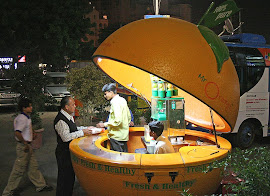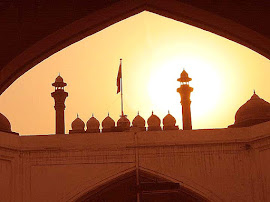Life After Death PART XIX (What the Soul sees after)
Death is not as many imagine it to be. All of us at the hour of our death will see and experience much to which we are not accustomed. The purpose of this brochure is to expand and detail our understanding of the inevitable separation from the transitory body. Some think death is a sleep without dreams. You close your eyes, fall asleep and there is nothing more, just darkness. Sleep ends in the morning, but death is eternal. Many are very frightened of the unknown and of the question, "what will happen to me?" So, instead, they choose not to think about death. However, deep within us there is always the knowledge of the inevitable and an accompanying sense of disquiet. Each one of us will have to cross that boundary. We should contemplate it and prepare ourselves.
Some say, "What is there to contemplate or prepare for? It's beyond our control. Our time will come and we will die — that is it. While there is time, we must take everything we can from life. Eat, drink, love, achieve power and glory, earn money, etc. Don't dwell on anything unpleasant or upsetting and certainly don't think about dying." Many follow this ideation.
Yet at times each of us may have more disturbing questions: "What if that's not the case? What if death is not the end? What if I find myself in a completely new place with my abilities to see hear and feel intact?" And most importantly, "what if our future beyond the threshold depends in part on the way in which we lived this life and what we were before we crossed the threshold of death?"
From a compilation of the accounts of survivors of clinical death, we can glimpse what the soul sees and experiences upon its separation from the body. During the process of dying, when a person reaches the limit of enfeeblement, he can hear as the doctor pronounces him dead. Then he sees his double, a lifeless body, lying below him surrounded by doctors and nurses trying to revive him. This unexpected scene shocks the person, who for the first time looks upon himself from outside of his body. It is at this point that he begins to realize that all of his abilities — to see, to hear, to think, to feel, etc. — continue to function, but now completely independent of his outer membrane, the flesh. Finding himself floating above the people in the room the person instinctively tries to make them aware of his presence by touching or speaking to one of them. But to his dismay, he is completely cut off from everyone. No one hears his voice or notices his touch. At the same time, he is puzzled by his feelings of relief, peace and even happiness. There is no longer that part of himself, that "me," which suffers, which needs and is always complaining about something. Having experienced such ease, the soul usually does not want to return to its body.
In the majority of documented cases of temporary death, after a few moments of observation, the soul returns to the body and thus ends its knowledge of the afterlife. However, on occasion the soul continues to travel further into the spiritual world. Some liken this condition to travelling through a dark tunnel. After this the souls of some arrive in a world of great beauty where they sometimes meet deceased relatives. Others arrive in a realm of light and meet a being of light from whom feelings of great love and understanding radiate and warm the soul. Some insist that it is our Lord Jesus Christ while others say it is an angel, but all agree that it is someone full of good and compassion. Still others arrive in dark netherworlds where they describe seeing loathsome and cruel beings.
Sometimes the meeting with the mysterious being of light is accompanied with a "review" of life during which a person remembers his past and judges the moral value of his actions. After this, certain people see something similar to a barrier or boundary. They can feel that if it is crossed, they will not be able to return to the physical world.
Not all people, who revive after death, experience all of the stages described above. A significant percent of people returned to life could remember nothing of what happened to them "on the other side." The mentioned occurrences are placed above in order of their frequency from greatest to least. Based on Dr. Ring's facts only one in seven people who remember their out of body journeys speak of seeing a light or speaking with a being of light.
Thanks to the progress of medicine, the reanimation of the dead has become a somewhat standard procedure in most modern hospitals. Before, it was almost never attempted. Consequently, there exist differences between accounts of life after death in ancient, traditional, and modern literature. Religious books of the older era describe the appearances of the souls of the dead who tell of things they have seen in heaven or hell and of their otherworldly meetings with angels or demons. This first category of accounts should be considered descriptions of a "distant cosmos" in as much as they tell us of a spiritual world far removed from our own. Whereas the second category of contemporary accounts, as detailed by the doctors, primarily describe the "near cosmos" i.e. the first experiences of a soul who has just left the body. They are interesting in that they complement the first category of accounts and provide us with a clearer picture of what awaits each of us on the other side. Between these two categories is the story of K. Uekskuelll, published by Archbishop Nikon in the "Trinity Pages" in 1916 under the title of "Incredible to many, but a true happening" which encompases both worlds the "near" and "distant." In 1959 the "Holy Trinity Monastery" republished this story as a pamphlet. We provide it here in condensed form. It encompasses elements of both the older and modern day accounts of the afterlife.
.jpg)








.jpg)

0 comments:
Post a Comment